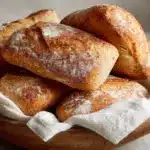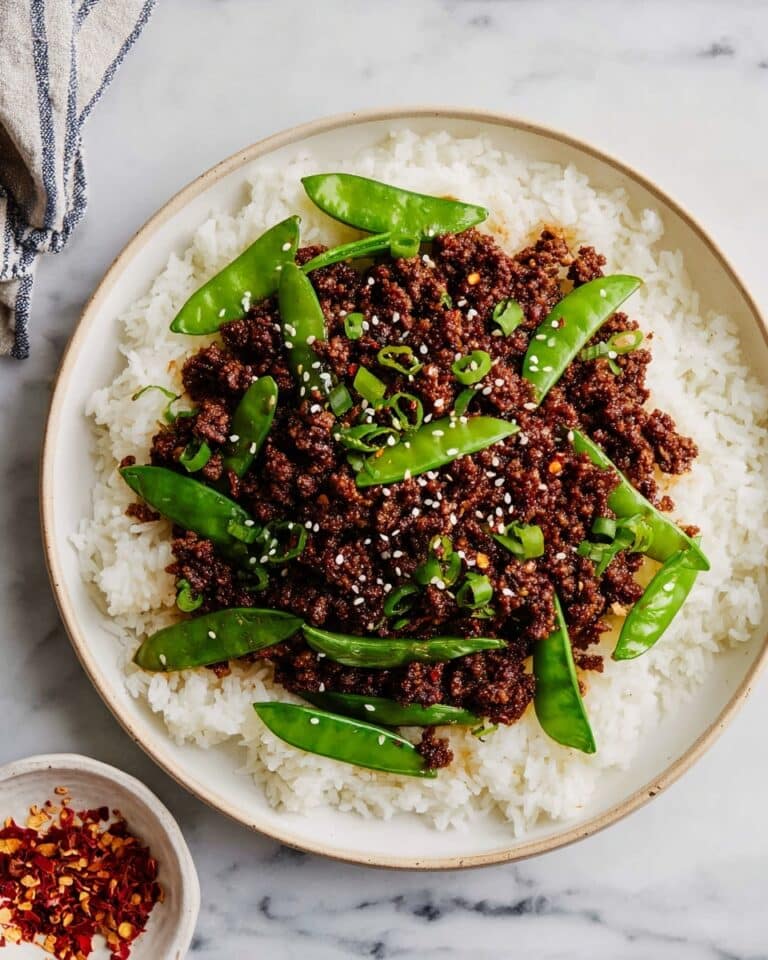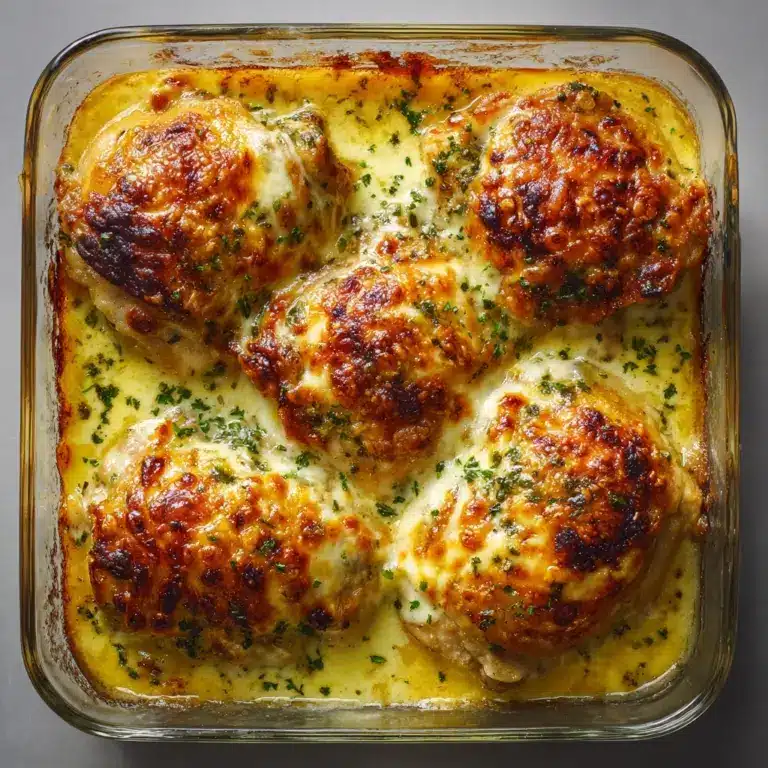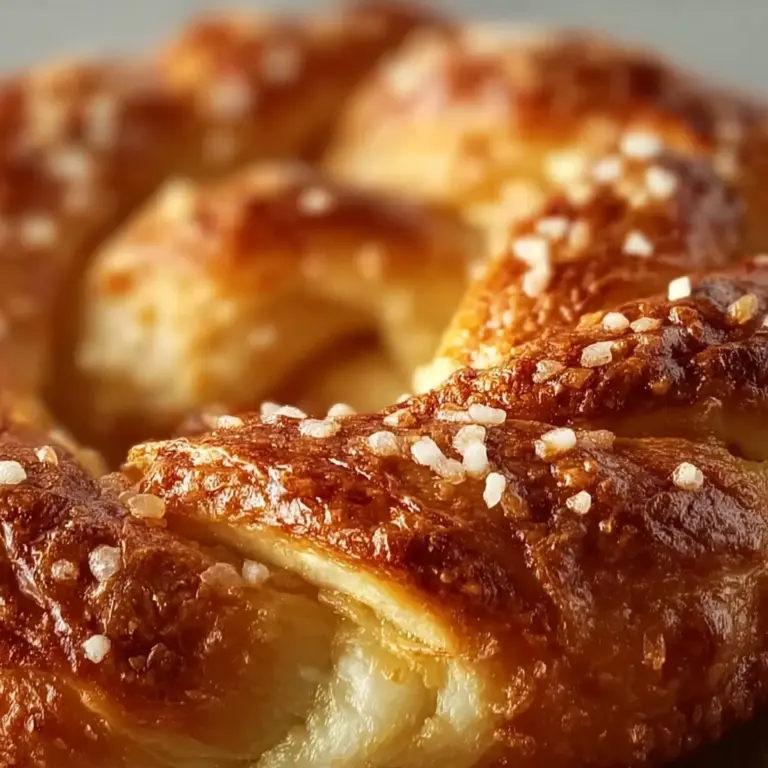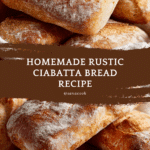Ciabatta Bread Recipe
Light, chewy, and crusty in all the right ways, Ciabatta Bread captures everything I love about a freshly baked loaf. Its rustic appearance hides a pillowy, open crumb inside, and the subtle flavor of olive oil ties it all together in a way that instantly transports me to an Italian bakery. Whether it’s the irresistible aroma wafting from the oven or the anticipation of that first bite, making Ciabatta Bread at home feels like a little culinary adventure every time.
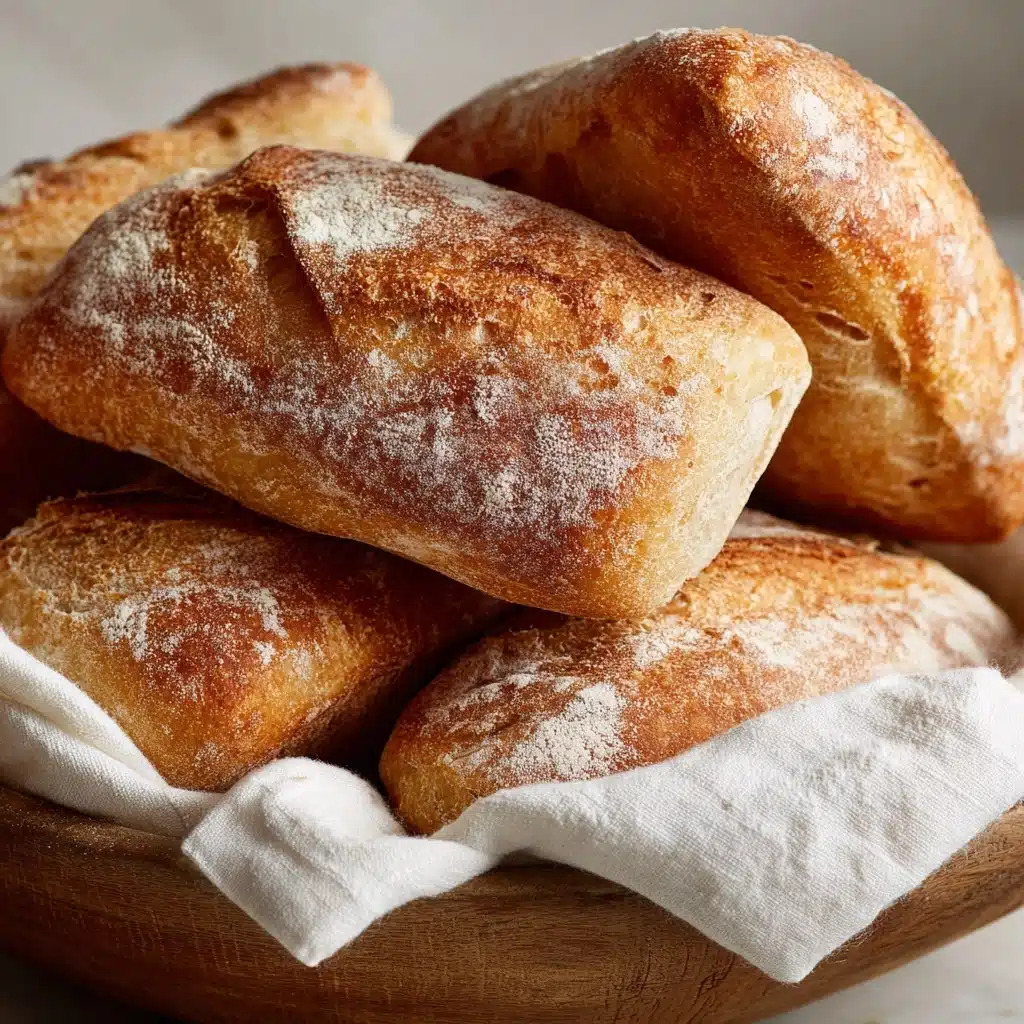
Ingredients You’ll Need
Ciabatta Bread lets a handful of kitchen staples shine, and every ingredient earns its spot in the recipe. From the gentle tang of yeast to the unmistakable fragrance of olive oil, each one is key for flavor, structure, and that signature airy texture.
- All-purpose flour: This gives the bread its sturdy yet tender crumb, making it ideal for holding generous spreads or sandwich fillings.
- Warm water (110°F): Just the right temperature to encourage the yeast to bloom, which jumpstarts that lovely rise.
- Active dry yeast: The ingredient that brings the dough to life, lending Ciabatta Bread both its lift and characteristic lightness.
- Salt: Essential for flavor, balancing the subtle sweetness of the flour and enhancing the bread’s overall taste.
- Olive oil: Adds moisture and a distinct, gentle richness that becomes more pronounced with every bite. Don’t skip the final drizzle for extra flavor!
How to Make Ciabatta Bread
Step 1: Mix the Dough
Start by whisking together the flour and yeast in a large mixing bowl—this ensures everything blends evenly. Gradually add the warm water while stirring with a wooden spoon or your hands; stop once you have a shaggy, sticky dough. Don’t worry if it looks messy at this stage—Ciabatta Bread dough should be loose and sticky, which is the secret to those beautiful holes inside.
Step 2: Knead for Structure
Turn the dough onto a floured surface and knead it for about ten minutes. You’ll feel it transform from sticky to smooth and elastic. Dust lightly with flour as needed to keep it from sticking. This kneading builds the gluten, giving Ciabatta Bread its sought-after chewy texture.
Step 3: First Rise
Set the dough in an oiled bowl, turning it once so it’s coated and won’t dry out. Cover with a damp cloth and find a warm, cozy spot in your kitchen. Let the dough rise undisturbed for about two hours, or until it has doubled in size. Watching the dough grow is half the fun, signaling that all the magic is happening.
Step 4: Shaping the Loaves
Gently punch down the dough to release any big air bubbles, then divide it into two equal pieces. With tender hands (to keep all those precious air pockets), shape each piece into a rectangle. There’s no need to be a perfectionist here—Ciabatta Bread celebrates being rustic!
Step 5: Second Rise
Lay your shaped loaves on parchment-lined baking sheets, cover loosely with a cloth, and let them rise for another hour. This final nap puffs them up even more, giving them their classic, slightly flat yet airy shape.
Step 6: Bake to Golden Perfection
Crank your oven up to 450°F (230°C). Before baking, drizzle each loaf with olive oil and add a sprinkle of sea salt if you like a salty crunch. Bake for 25 to 30 minutes or until the loaves are crisp and deeply golden. The smell will be absolutely irresistible—the hardest part is waiting for them to cool slightly before slicing in!
How to Serve Ciabatta Bread
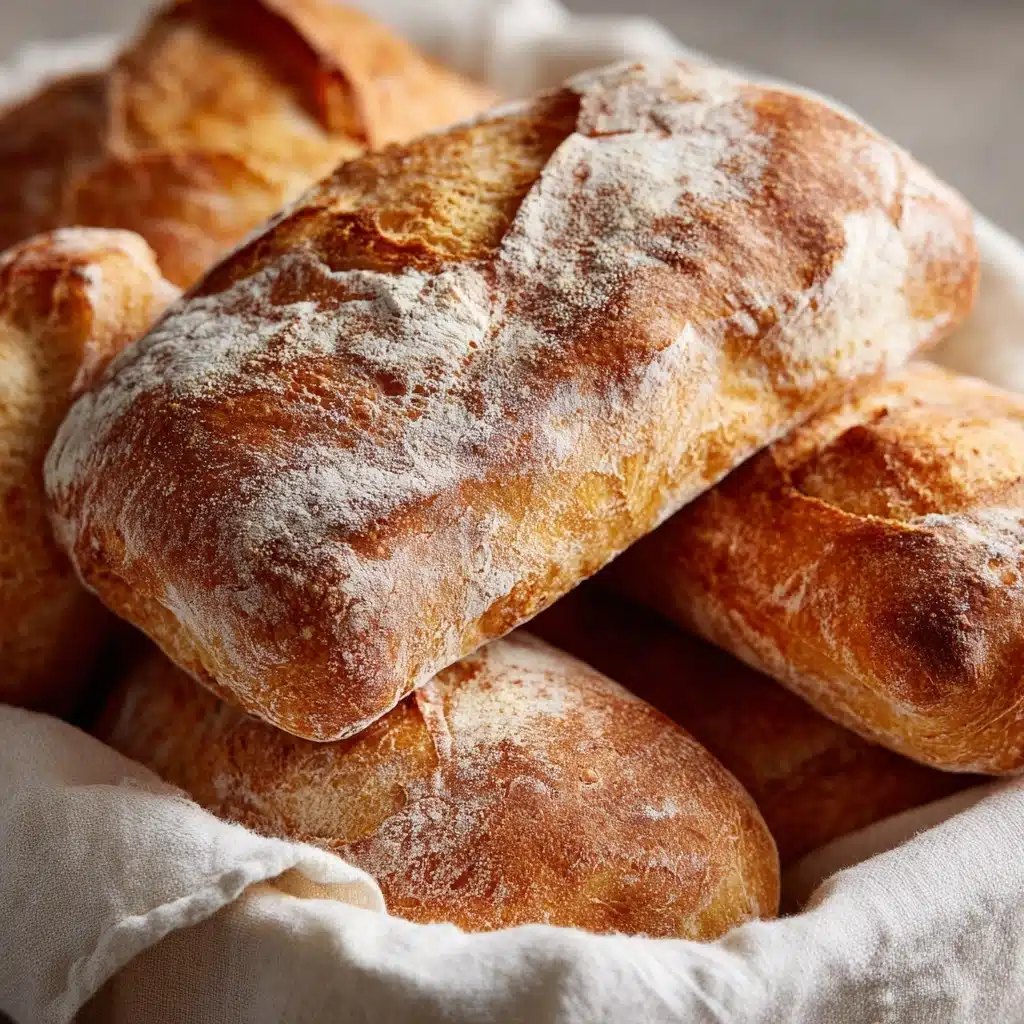
Garnishes
A simple brush of olive oil, a scattering of flaky sea salt, or a rub with a raw garlic clove right out of the oven are heavenly ways to garnish your Ciabatta Bread. You might also toss on a few fresh herbs or a dusting of cracked black pepper for an extra pop of flavor.
Side Dishes
Ciabatta Bread feels right at home on any table. Pair it with a hearty Italian soup, a fresh caprese salad, or simply alongside a plate of cheese and olives. It soaks up sauces like a dream and is the perfect sidekick for everything from pasta nights to simple tomato dips.
Creative Ways to Present
Slice it horizontally and toast it for dreamy panini, or cube it into croutons that elevate any salad. Serve torn pieces in a bread basket, or even use Ciabatta Bread as the base for garlic bread. However you present it, its rustic look makes every meal feel special.
Make Ahead and Storage
Storing Leftovers
Keep any leftover Ciabatta Bread loosely wrapped in a clean kitchen towel or paper bag at room temperature for up to two days. If you want to keep the crust crisper, avoid using plastic wrap, as it can make the bread soften quicker.
Freezing
Ciabatta Bread freezes beautifully! Allow it to cool completely, then slice or leave it whole. Wrap tightly in plastic wrap and a layer of foil, then freeze for up to three months. Defrost at room temperature whenever you need a fresh loaf.
Reheating
To refresh your loaf, pop slices in a toaster or warm whole loaves in a 350°F oven for about 10 minutes. This brings back that crisp crust and soft interior, making your Ciabatta Bread taste as if it were just baked.
FAQs
Can I make Ciabatta Bread by hand without a stand mixer?
Absolutely! This dough is naturally sticky, but all it takes is some patience and a little extra flour on your work surface. Kneading by hand gives you more control and lets you feel the dough come together.
Why is my Ciabatta Bread so flat?
If your dough felt too loose or over-proofed, it might not hold its shape as well. For best results, handle gently during shaping, and make sure your yeast is active and fresh for a good rise.
Can I add flavors to the dough?
Definitely! Mix in chopped rosemary, roasted garlic, or even olives before shaping for a delicious twist on classic Ciabatta Bread. Just be careful not to overload the dough to keep that airy crumb.
How do I get those big holes in the crumb?
The key is a wet dough and gentle handling so you don’t deflate the precious air pockets that form during rising. Resist the urge to add too much flour and use a light touch during the shaping process.
Is Ciabatta Bread good for sandwiches?
It’s one of the best! Its sturdy crust and open texture make it ideal for soaking up spreads or holding layers of fillings without ever turning soggy. Panini are especially delicious when made with fresh Ciabatta Bread.
Final Thoughts
If you’ve never baked bread before, Ciabatta Bread is the perfect place to start. The process is simple, the results feel gourmet, and every bite is a little celebration. Give it a whirl and let the amazing aroma fill your kitchen—you’ll never look at a store-bought loaf the same way again!
PrintCiabatta Bread Recipe
Learn how to make delicious homemade Ciabatta Bread with this easy-to-follow recipe. Perfect for sandwiches or dipping in olive oil and balsamic vinegar!
- Prep Time: 20 minutes
- Cook Time: 30 minutes
- Total Time: 3 hours
- Yield: 2 loaves 1x
- Category: Bread
- Method: Baking
- Cuisine: Italian
- Diet: Vegetarian
Ingredients
Dough:
- 4 cups all-purpose flour
- 1½ cups warm water (110°F)
- 2¼ teaspoons active dry yeast
- 2 teaspoons salt
- 2 tablespoons olive oil
Instructions
- Mix the Dough: In a large bowl, combine flour and yeast. Gradually add warm water while stirring until a shaggy dough forms.
- Knead the Dough: On a floured surface, knead the dough for about 10 minutes until smooth and elastic.
- Rise the Dough: Place the dough in an oiled bowl, cover with a damp cloth, and let it rise in a warm place for about 2 hours or until doubled in size.
- Shape the Loaves: Gently punch down the dough, divide it into two pieces, and shape each into rectangular loaves.
- Final Rise and Bake: Transfer the loaves to parchment-lined baking sheets, cover again, and let rise for another hour. Preheat the oven to 450°F (230°C). Drizzle the loaves with olive oil, sprinkle sea salt, and bake for 25-30 minutes until golden brown.
Nutrition
- Serving Size: 1 slice (about 50g)
- Calories: 150
- Sugar: 0.5g
- Sodium: 250mg
- Fat: 2g
- Saturated Fat: 0.5g
- Unsaturated Fat: 1.5g
- Trans Fat: 0g
- Carbohydrates: 28g
- Fiber: 1g
- Protein: 4g
- Cholesterol: 0mg
Keywords: Ciabatta Bread, Homemade Bread, Italian Bread, Yeast Bread

